The Queen of Open Summer Flowers in all countries is rightfully recognized by Petunia. This native of a sultry Brazil attracts dacniki specious diversity, beautiful flowering, a rich palette of flowers, large flowers and fragrant aroma. Growing petunition and care for them is a pleasure. However, those who only got acquainted with this amazing plant, still it will not hurt to learn the rules for cultivating petunias from seeds and the peculiarities of the seedlings.
Scientific interest in Petunia's colors for the first time showed Jean-Baptiste Lamark. The French researcher-naturalist called this family tobacco, and after some time the culture was determined in a separate genus and gave the name of Petunia (from the word "Petun" - the local population of Brazil nicknamed tobacco).
Petunia varieties
City gardens and parks decorate garden (hybrid) variety of culture. The first decorative variety was led in 1839, and after 14 years, flower beds were replenished with terry varieties of petunia. In 1881, it was possible to get plants with large flowers. Their ampelous conifers won universal recognition in the 60s of the last century.
Depending on the size of petunia colors, it happens:
- large-flowered - Flowers reach 7 - 13 cm in the diameter;
- small-color - the diameter of the flowers does not exceed 5 - 8 cm.
Recently, the attention of the gardeners is riveted to varieties with miniature flowers (2 - 4 cm in the diameter), which also ranked small-bedal petunias.
Petunia of different varieties have many differences. Particularly diverse in this large-flower petunia. For example, the edges of petal petals of the fimbrite variety are decorated with air fringe, and the superbission variety is distinguished by a wide zev and wavy edges. And from terry petunitions, do not tear off the eye. Their colors besides white, are amazed by all sorts of shades of red pink, purple and blue. Today there are only sunny yellow and orange petunitions.
Photos of Petunia eloquently prove that these beautiful flowers in their simplicity look wonderfully look like in a kashpo on the balcony and in the open flower bed in the garden.
Petunia reproduction rules
Elegant petunias can become proud of your garden, but for a start, this beauty must be raised. Of course, you can go the easiest way and just buy a ready-to-land seedlings. However, this gardeners are interested in growing petunia on their own.
Most of the hybrids and varieties of culture are multiplied with both seeds and stalling. For reproduction, cuttings need uterine petunias. Plants grown in different ways have some differences. So, petunias from seeds are very hardy and abundantly bloom, and petunias obtained as a result of the shilling, are ahead of them in growth and flowering.
Petunition cultivation: how to sow seeds
The most suitable moment for sowing seeds Petunia falls for the period from February to April. The exact time depends on the landing in the garden. Home seedlings are grown from seeds sitting at the end of March. When the first leaves appear on the sprouts, the seedlings are divened on the closed balcony or in a greenhouse, reliably tightened by the film. Southern in March Petunia blooms in June.
Seeds in the garden beauty are very small and their own powered nutrients in them is practically no, therefore, the requirements for the soil in which Petunia will be sown, special. It must have the following high indicators:
- looseness;
- light mechanical composition (small size of elementary particles);
- nutrition;
- neutral acidity.
For a successful sowing, a small and not very deep walker with holes in the bottom are perfectly suitable. Fill it with a nutrient substrate, in touch with approximately 1 cm to the edge. The miniature sowing material is best mixed with sand, which will allow the seeds to accommodate more evenly in the line. In order for petunias to acclimatize faster, sprinkle seeds with water.
Please note that you do not need to pull the crops. Just cover them with glass or pull the polyethylene film from above (as an option - Loutrasil, dense paper). The temperature should not be below 20 0C. This recommendation concerns ordinary petunia seeds, but today you can find granulated plant seeds. They look like granules covered with a shell of nutritional components that fence seedlings from diseases. The size of the granules exceeds the size of ordinary seeds, so they are much easier to soap them in the soil.
If you purchased granulated petunia seeds, keep in mind that in a dry environment they will not be powder and die. So that this does not happen before sowing seeds, carefully moisten the soil and watch it to remain wet until the seedlings are good. In this case, it is preferable to moisten the soil from the pallet through the drainage holes of the planting capacity or regularly spray crops from the water sprayer.
Petunia Care
Growing seedlings of petunias, gardeners noticed such a pattern: simple seeds germinate in about 4 to 6 days after sowing, and shoots from granulated seeds appear on average 2 days later. Young seedlings need abundant lighting and moderate soil moisture. With a shortage of light, shoots are strongly pulled out, and if there is also an excessive humidity to this, a black leg is dying away from the disease. So that the soil is moistened moderately, from time to time, remove the glass from the plane, and after the disclosure of the seedlings, remove it at all.
Petunia shoots grow leisurely, so during the month they can be kept in the same container in which they were sown. Then, when the sprouts will acquire 3 - 4 with these leaves, they are priced, and after a week they feather.
If seedlings feel well - they did not stretch and retained the bright green color of the leaves, adopt their easily soluble complex mixture. Weakened sprouts with darkened leaves need nitric feeding. Fertilize the plant in 1 week after dive, choosing universal complex mixtures for this purpose. Then young petunias will quickly go to height and will be abundantly blooming.
So that the seedlings are compact, strong and branches, pinch the side shoots, creating the desired form of petunia. If we talk about ampel petunias, with them such a reception does not work: Even if you pinch them, they will still be weakly increasing the branches, preferring to stretch in length. By moving to the garden seedlings, it will be ready for the middle of May, and if the weather outside the street was warm, you can safely transplant it into caspo, containers or flower beds.
Growing petunias from cuttings
To get the offspring of Petunia in a vegetative way, in the fall, we bask healthy and strong uterine bushes. The main difficulty is to keep the uterine copies during the cold season, when they catastrophically lack light. The temperature should be saved within +12 - +15 0C. If there is enough light, the shilling is carried out in February-March, so that by the time of the resettlement in the open soil of the Petunia cuttings managed to grow and were healthy.
On the cuttings, the tops of the shoots of 4 - 6 cm in size are selected in length. From large-scale varieties of petunias cut off the bottom sheet, and the rest do shorter. Finished cuttings deepen into the air and moisture substrate. To avoid drying soil cuttings protect Loutrasil.
Cuttings are allowed at a temperature of +20 - +22 0With and good lighting. The root system begins to develop an average after 7-10 days, and after 20 days of the tops of rooted twigs, they pour and transferred to individual pots.
Landing and care for petunias
Star Hour for Petunia comes during dry and hot summer - are ideal conditions to break a luxury flower garden with a charming plant. Hybrids with small flowers are easier to carry dampness and coolness, so long bloom in autumn. For flowering petunition with small flowers enough -4 0C, they are safely transferred to open soil before other varieties in mid-May. And if we provide them with reliable protection in the form of Loutrasil or a dense film, then the landing time can be transferred even at the beginning of May. The large-flowered varieties of plants do not accept dampness, so the optimal time for their landing falls on the second half - the end of May.
Abundant flowering petunition is possible only in loose and nutritious soil, so they must be fed. After landing, this can be fertilized with a nitrogen mixture, and even spend it again after 1 week, if the pets are yellowing. In the future, try to maintain the balance between the increasing petunia and its flowering. To do this, until the end of the summer, regular feeding with complex mixtures with a large potassium percentage are carried out. If the summer was arid, feeding the petunition to unite with watering. Subject to the crude weather, fertilizers scatter on the ground under the bushes of colors without affecting their leaves.
In what place to land a petunia
A gentle plant boasts good drought resistance, it is for this reason that containers most often use containers. Large containers standing on Earth are a comfortable platform for the design of multi-colored ensembles from miniature or large petunias. And hanging porridges and balcony boxes are ideal for ampels.
Petunia landing can be very dense - this is when in a small container with a diameter of no more than 15 cm, 2 - 3 bushes are calmly placed. Optionally, give the flower more freedom so that each copy is at some distance from the "neighbors". Ampel varieties are planted with a slope to the side of the landing capacity.
Care for petunias growing in plastic containers consists in moderate watering and systematic feeding. Young bushes fertilize with liquid complex compositions, and adult plants with a large number of shoots and leaves are treated with a versatile fertilizer from the sprayer.
In the thickened landings of Petunia, you need to regularly restore order: cut out weakened shoots, which are about to get, as well as delete "extra", strongly increasing shoots. Paging of ampel petunitions after landing is another important point in the leaving of the plant. This technique stimulates the germination of new trunks and provides petunias an attractive lush look.
How to care for petunias: useful recommendations
- Seedling is not aesthetically drawn up and weakens in conditions of light shortage. To correct the situation in the winter period, gardeners use a luminescent lamp, thus felt by the plant shortage of sunlight.
- Seeded petunia seedlings at first very weak, so risks quickly die. It is necessary to help them strengthen: spend timely watering and prevent the soil drying when it is captured by a dense crust.
- If the seedlings still stretched out, add to the landing capacity of the Earth to pour out the bold shoots.
- The conditions of growing petunition in the garden and in pots are different. So, the flowers growing in porridge and containers are watered and fertilized more often than the flows of petunias in open soil.
- So that the plant blooms again, triggering bushes that have already been blowing.
- Petunia needs to be protected from a pouring rain, otherwise the shower will reduce her lush flowering.

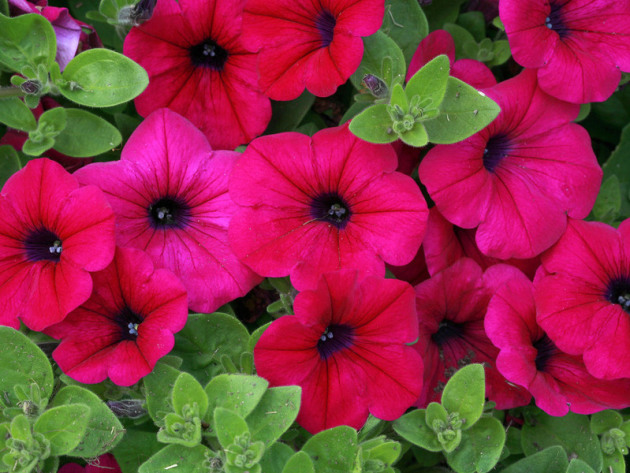
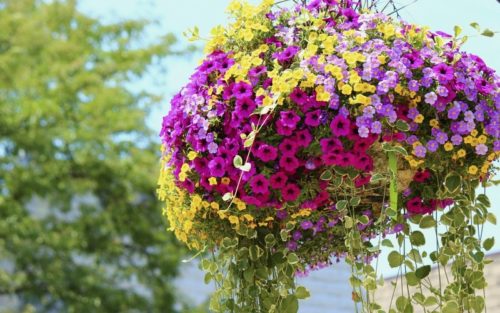
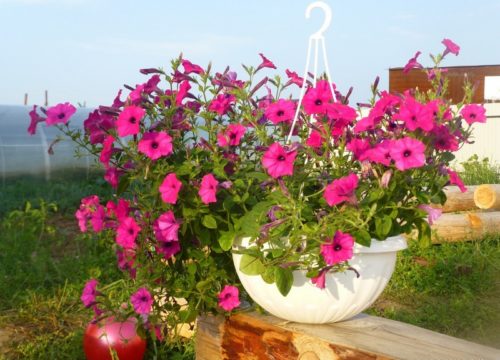
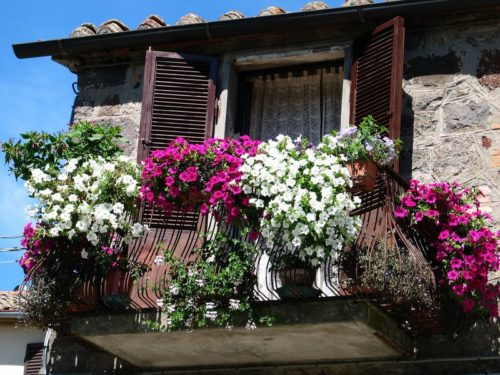
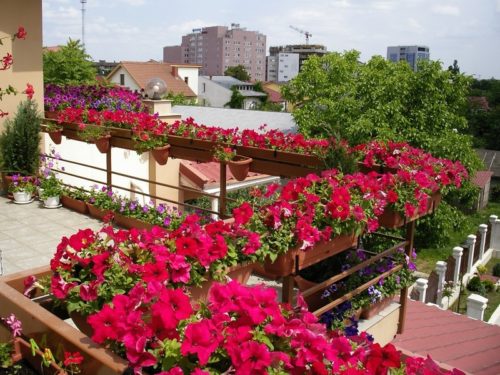
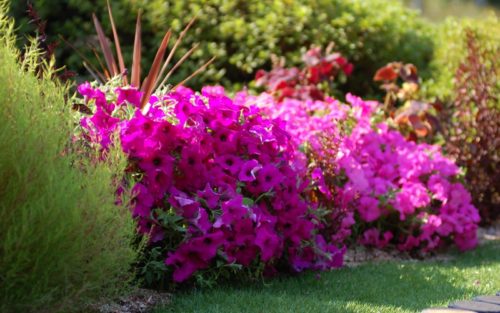
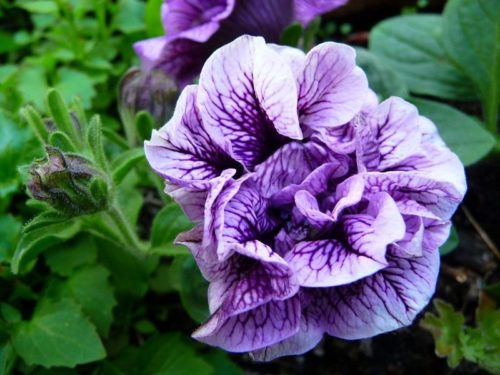
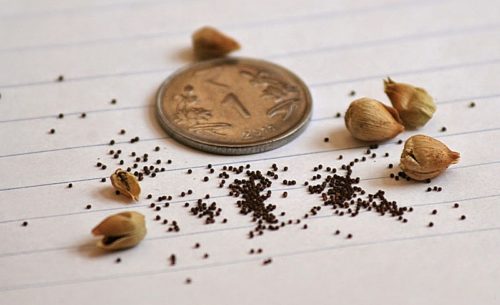
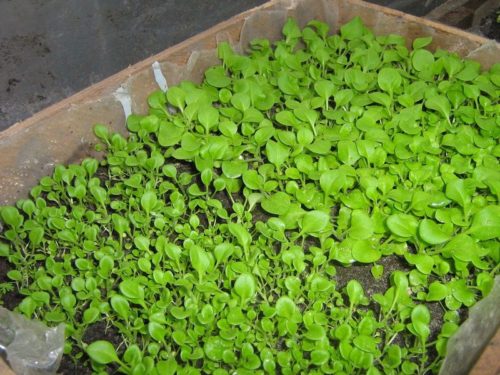
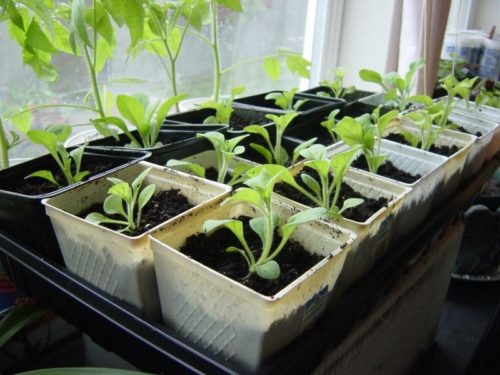
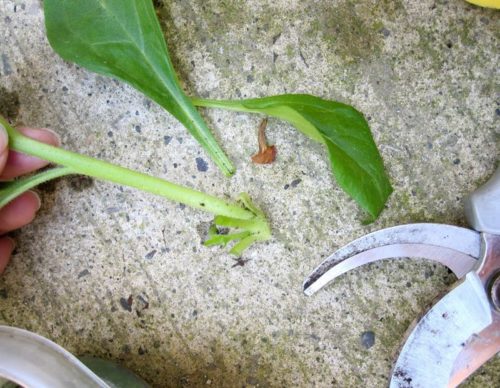
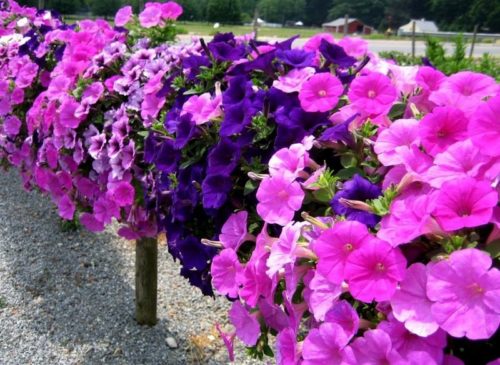
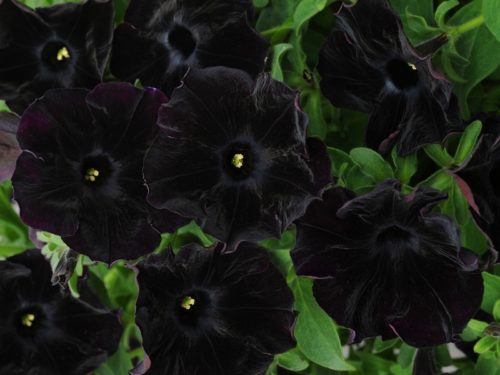
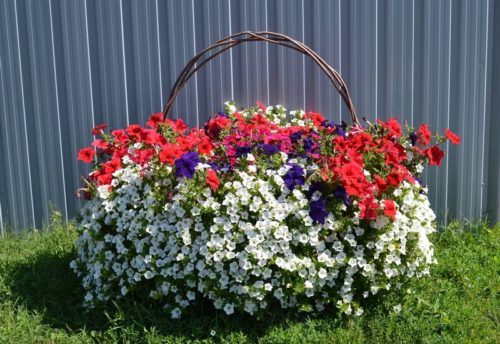
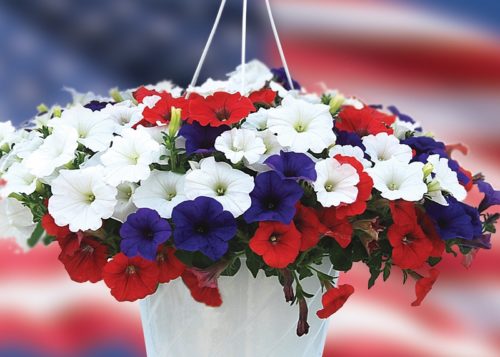
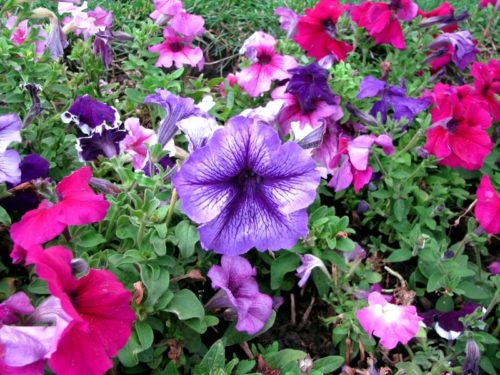












 Start a discussion ...
Start a discussion ...